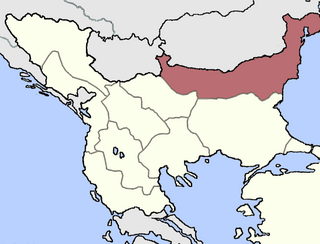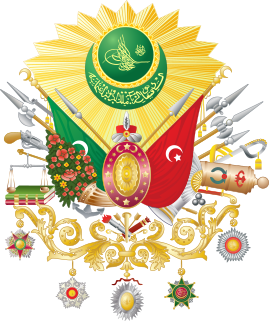 W
WThe Vilayet of the Danube or Danubian Vilayet was a first-level administrative division (vilayet) of the Ottoman Empire from 1864 to 1878. In the late 19th century it reportedly had an area of 34,120 square miles (88,400 km2).
 W
WThe First Constitutional Era of the Ottoman Empire was the period of constitutional monarchy from the promulgation of the Kanûn-ı Esâsî, written by members of the Young Ottomans, that began on 23 December 1876 and lasted until 14 February 1878. These Young Ottomans were dissatisfied by the Tanzimat and instead pushed for a constitutional government similar to that in Europe. The constitutional period started with the dethroning of Sultan Abdulaziz. Abdul Hamid II took his place as Sultan. The era ended with the suspension of the Ottoman Parliament and the constitution by Sultan Abdul Hamid II, with which he restored his own absolute monarchy.
 W
WThe Great Eastern Crisis of 1875–78 began in the Ottoman Empire's territories on the Balkan peninsula in 1875, with the outbreak of several uprisings and wars that resulted in the meddling of international powers, and was ended with the Treaty of Berlin in July 1878.
 W
WThe Herzegovina uprising was an uprising led by Christian population, mostly Serbs, against the Ottoman Empire, firstly and predominantly in Herzegovina, from where it spread into Bosnia and Raška. It broke out in the summer of 1875, and lasted in some regions up to the beginning of 1878. It was followed by the Bulgarian Uprising of 1876, and coincided with Serbian-Turkish wars (1876–1878), all of those events being part of the Great Eastern Crisis (1875–1878).
 W
WThe Montenegrin–Ottoman War, also known in Montenegro as the Great War, was fought between the Principality of Montenegro and the Ottoman Empire between 1876 and 1878. The war ended with Montenegrin victory. Six major and 27 smaller battles were fought, among which was the crucial Battle of Vučji Do.
 W
WThe Russo-Turkish War of 1877–1878 was a conflict between the Ottoman Empire and the Eastern Orthodox coalition led by the Russian Empire and composed of Bulgaria, Romania, Serbia, and Montenegro. Fought in the Balkans and in the Caucasus, it originated in emerging 19th-century Balkan nationalism. Additional factors included Russian goals of recovering territorial losses endured during the Crimean War of 1853–56, re-establishing itself in the Black Sea and supporting the political movement attempting to free Balkan nations from the Ottoman Empire.
 W
WThe Serbian–Turkish Wars, also known as the Serbian–Ottoman Wars or Serbian Wars for Independence, were two consequent wars, fought between the Principality of Serbia and the Ottoman Empire. In conjunction with the Principality of Montenegro, Serbia declared war on the Ottoman Empire on 30 June 1876. By the intervention of major European powers, ceasefire was concluded in autumn, and the Constantinople Conference was organized. Peace was signed on 28 February 1877 on the basis of status quo ante bellum. After a brief period of formal peace, Serbia declared war on the Ottoman Empire on 11 December 1877. Renewed hostilities lasted until February 1878. Final outcome of wars was decided by the Congress of Berlin (1878). Serbia gained international recognition as an independent state, and its territory was expanded.